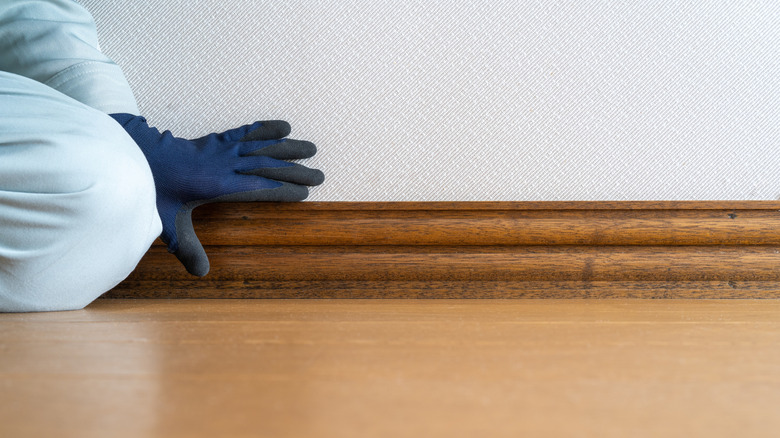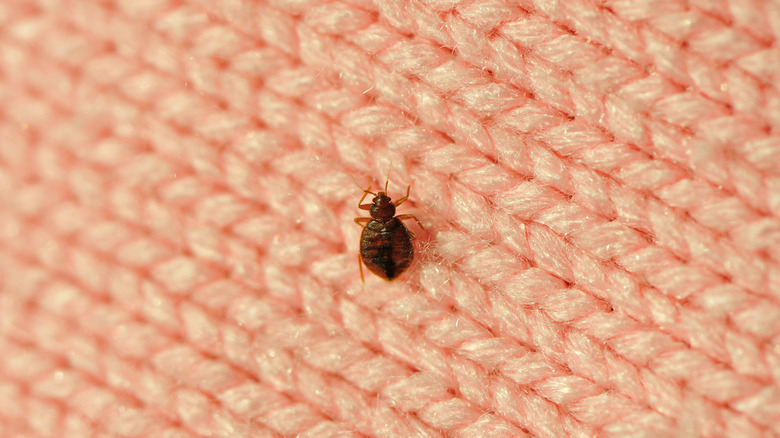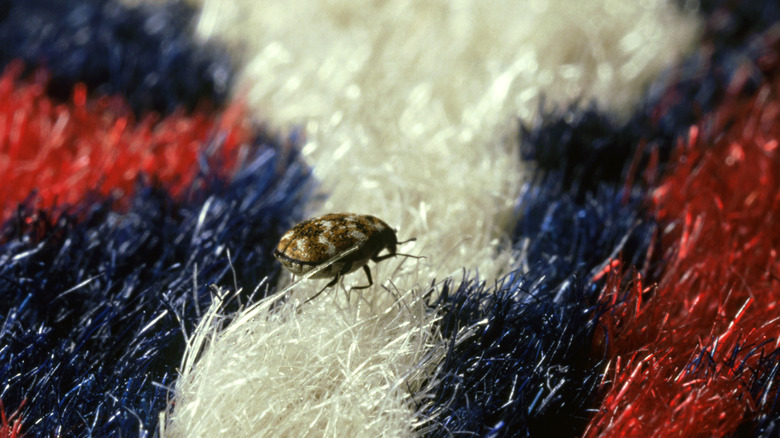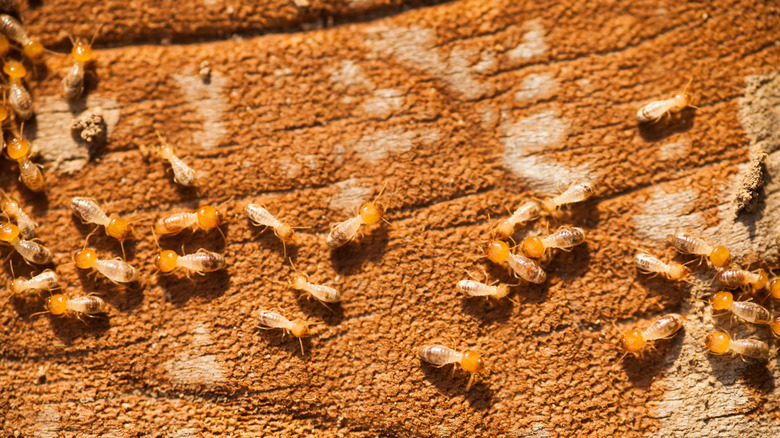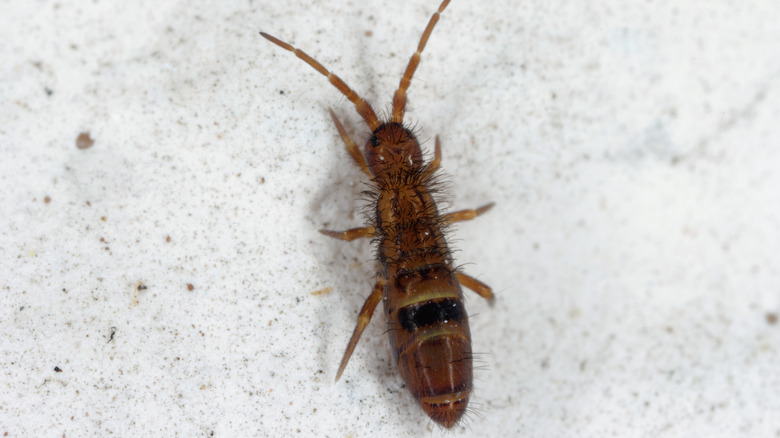I Have Tiny Brown Bugs Around My Baseboards In My House
Whether you live in a house or an apartment, maintenance is part of the package, and there are always unpleasant details you'll have to handle to keep things comfortable for you and your family. In particular, both homeowners and renters have to deal with pest problems from time to time. It's much easier to find the right solution for these problems if you can identify the pest you're dealing with, but unfortunately, this is sometimes easier said than done.
Insects are one of the most common pests, and if you've been noticing tiny brown bugs lurking around your baseboards recently, you may be wondering how to get rid of them. Unfortunately, the answer to this question can be somewhat elusive, because more than one type of tiny brown bug can make an appearance around your home's baseboards, so you'll need to take a closer look at the insects themselves to determine what kind of critter you're dealing with. Don't worry, though, because we're here to help you figure out whether you have bedbugs, carpet beetles, termites, springtails, or wood roaches.
Bedbugs
Our first entry is one of the most common types of bugs you can find in beds, and their name implies a certain love for furniture, but don't rule out bedbugs if you spot little brown insects crawling around baseboards. These tiny bugs have a brown or reddish body that's similar in size to an apple seed, and their small dimensions allow them to very easily squeeze in just about anywhere. Bedbugs are commonly found on floors, ceilings, and walls. You may also find them under wallpaper and on beds, couches, curtains, and fabrics. The EPA even says that they've been located in the head of a screw(!), so that gives you a pretty good idea of their flexibility. To differentiate between a bedbug and other similar insects, it's useful to know that bedbugs have a flat, oval-shaped body. It's also said that you can identify bedbugs from their sweet scent, which is similar to the scent of raspberries.
One of the most frustrating things about dealing with bedbugs is that, well, they bite. Bedbugs bite humans quite often and these bites can lead to very itchy welts that you'll find zigzagging across the body. Bedbug bites, furthermore, are somewhat difficult to identify because they look similar to those of other insects such as chiggers. Worst of all, though, is the fact that getting rid of bedbugs is notoriously difficult, and usually requires professional pest control services.
Carpet beetles
Once you've ruled out bedbugs, you may be dealing with the insect known as carpet beetles. As their name suggests, these small insects are technically beetles and belong to the family Dermastidae. Carpet beetles are often found spending time laying eggs in the carpeting of homes and on bedding, clothing, and furniture. It's actually the larvae that are destructive, rather than the adults ... and yes, these are the ones that love to eat carpet fibers, stuffed animals, and other household things you'd prefer not be eaten. Unlike bedbugs, these insects don't bite, but the bristles on their body can cause a bit of mild irritation if there's any contact with a person's skin. Also, while eliminating carpet beetles from your home is not a fun process – and again, something you may want to call pest control for — their removal is, thankfully, not as excrutiating as getting rid of bedbugs.
Due to their unique appearance, it can be pretty easy to identify carpet beetles compared to other types of brown insects that could appear around your baseboards. These bugs are oval in shape and have fur that gives them a fuzzy, "mottled" appearance. A single insect may feature a variety of colors on their back, often with stripes. They're usually a shade of light brown or red, but may also feature some yellow, orange and white as well.
Termites
It may be unsettling to hear, but if you've noticed brown bugs hanging around your baseboards, it's possible that you're dealing with a termite problem. Termites are typically between 1/8 of an inch to a 1/2 inch long. They have straight antennae and bodies that are very soft as well as legs that are on the shorter side and similar to those of ants. They shed their wings, so you may want to look for them around your baseboards and carpeting to better identify them. You may also find mud tubes on your walls. These are tunnels that have been constructed by termites using wood and dirt.
If you're trying to identify termites, check for damage to your walls and baseboards. Drywall could be discolored or there could be pinholes in it. Paint could peel, wood could sound hollow if you tap it, and floorboards could become squeaky. Getting rid of termites, once you've found them, is most effectively done with insecticide sprayed around the home and in carefully positioned bait stations.
Springtails
Springtails may also be the tiny brown bugs you spotted around your baseboards. Springtails are small insect-looking creatures without wings, but interestingly they actually are not considered insects at all; they are a completely different species, which arguably has more in common with crustaceans. If you're trying to figure out if they're the bugs in your baseboards, there is one key element to look for: they jump around similarly to fleas and can hop up several inches at once — this is where their name comes from.
Springtails tend to hang out in places with a lot of moisture. You're likely to find them outside, whether under your porch, in gardens, or in wood piles; more generally, in spots with damp soil. However, it's possible to spot them inside as well, and they're known to make themselves at home in damp basements, under bathroom sinks, and so on. If you've been seeing brown bugs around your baseboards, it may also be a sign of moisture issues in your home.
Wood roaches
Another type of brown insect that may be spotted around baseboards is wood roaches. These roaches can vary from between ¾ inch to 1 inch in length. An adult wood roach can be identified by an off-white or clear stripe on their thorax's outer edge. As their name would suggest, wood roaches eat wood and organic matter. They love to eat wood that has decayed such as dead trees and branches. They tend to prefer the outdoors, but may occasionally make their way inside a home, particularly if they're carried in on the firewood you might use for your woodstove or fireplace.
If you've spotted wood cockroaches around your home's baseboards, then it could be that they've been feeding on the wood in your home. Regular cockroaches can live inside the walls of your home and the same is true for wood roaches as well, which would explain why you see them creeping out from your baseboard.
Unlike other types of roaches that are found in the home, wood roaches don't scare easily, but know that if they've made their way into your home, they probably don't want to be there. With that in mind, the presence of one wood roach doesn't necessarily mean there's a nest, so take care of the one before assuming you have a bigger problem on your hands.
